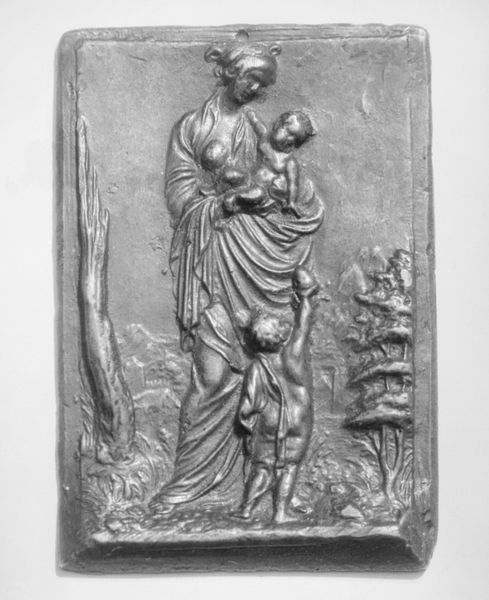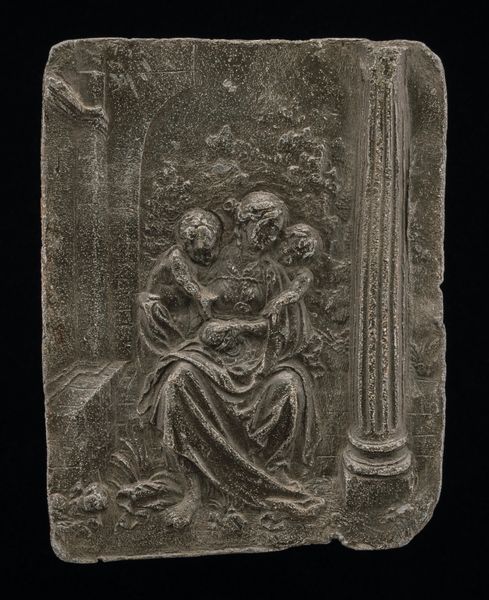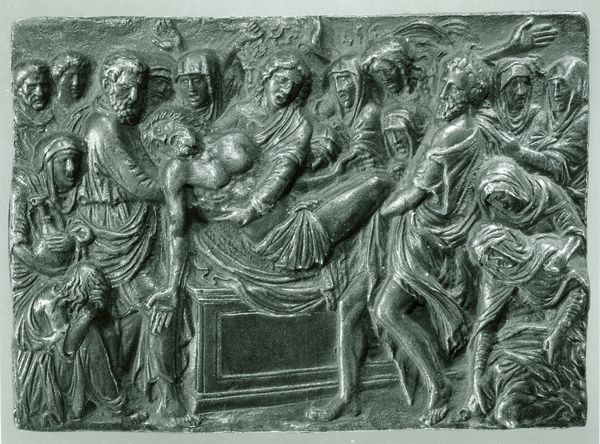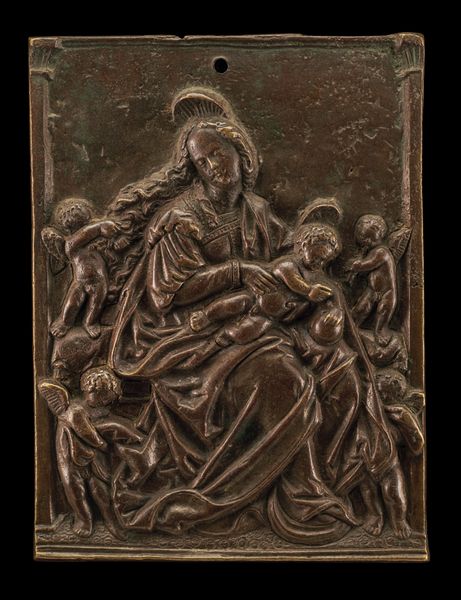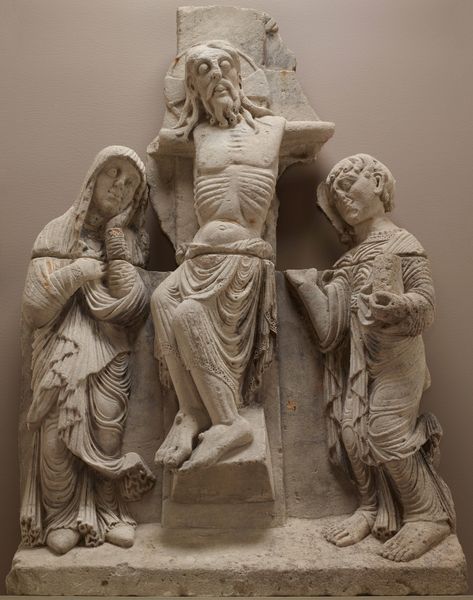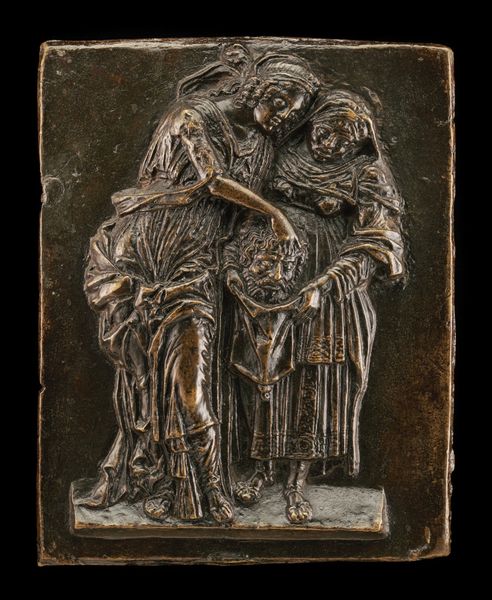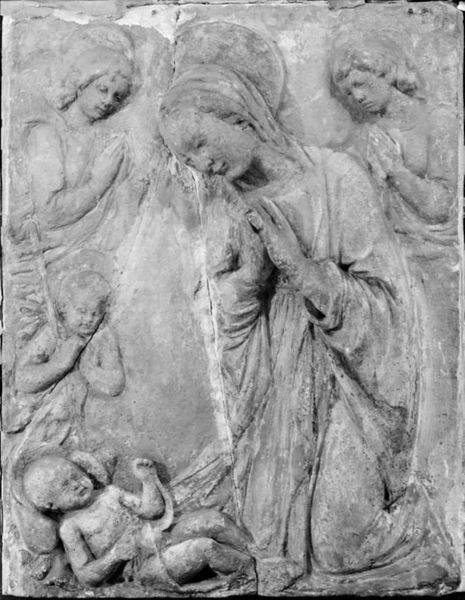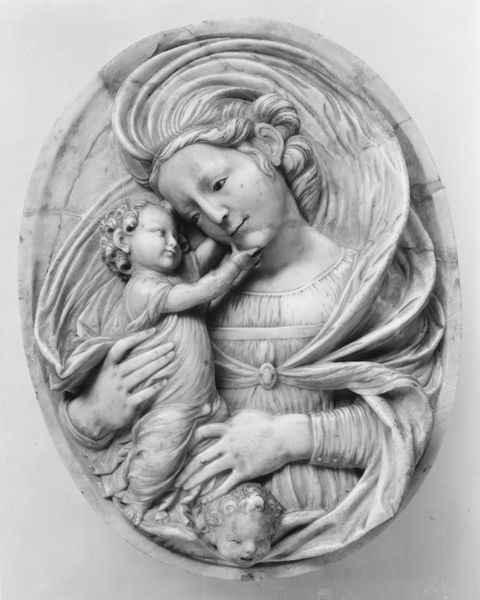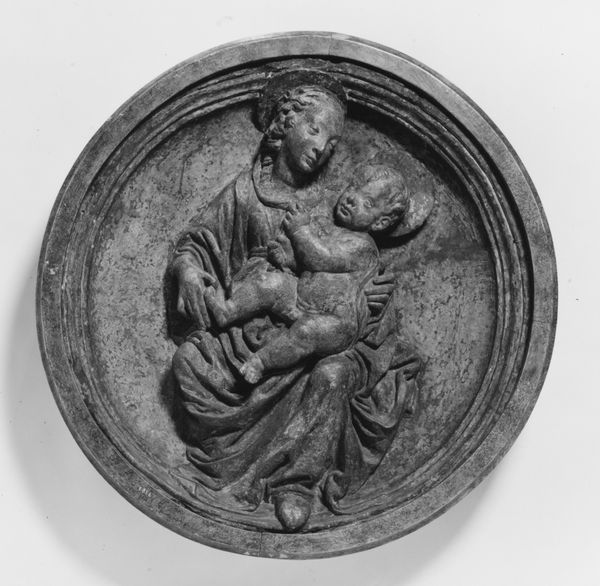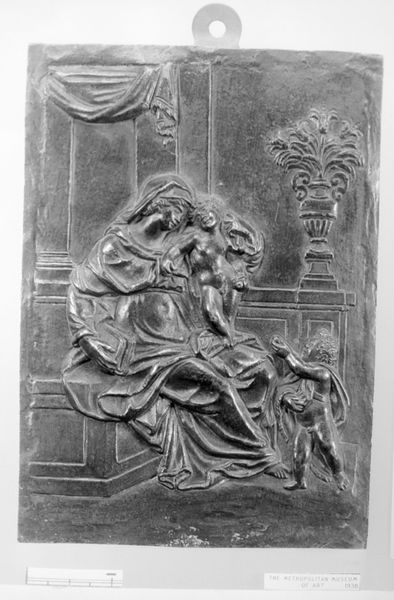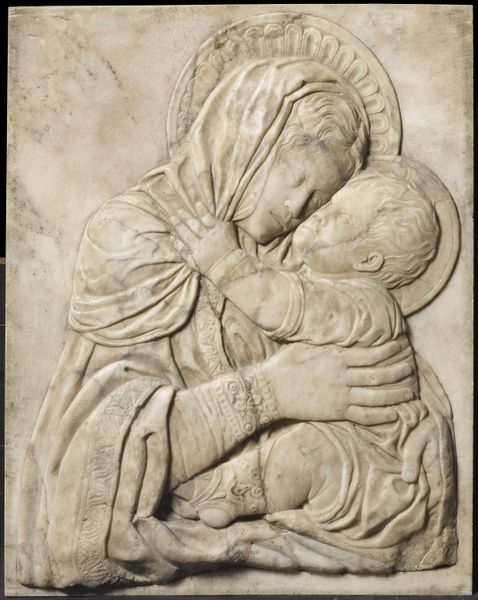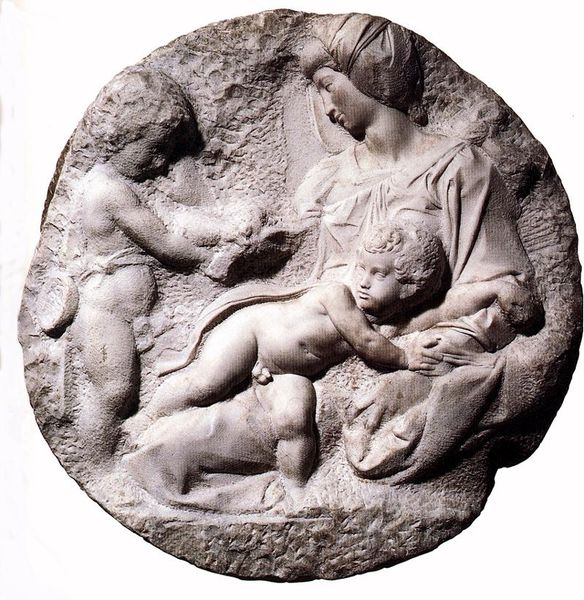
Dimensions: 11.1 x 10.2 cm, wt. 580.98 g.
Copyright: Public Domain
Curator: Before us is Jacopo Sansovino's marble relief, "Pieta," created between 1525 and 1550. It's a profound representation of the Virgin Mary cradling the body of Christ. Editor: It's stark. The monochromatic marble lends an incredible sense of gravity to the scene. The smooth polished areas contrast with the unworked parts of the material. It really emphasizes both the physical weight and emotional burden on Mary. Curator: Note the composition. The figures are arranged in a pyramidal structure, very typical of the Italian Renaissance, emphasizing balance and harmony. It is also the Renaissance idealization of human anatomy depicted through the musculature of Christ and the refined drapery of Mary. Editor: But that polished, idealized form, carved meticulously from marble, does somewhat abstract the real, physical experience of grief, doesn't it? I wonder about the hands of the sculptor. How long did it take to transform a block of stone into this scene of suffering? What were the conditions in the studio? Curator: Undoubtedly, skilled artisans collaborated in its production. Yet, let's focus on the sophisticated treatment of surfaces: the almost imperceptible carving of Mary's veil, and the textural differences denoting skin versus fabric, enriching the work's visual complexity and signifying its sacred nature through the perfect symmetry and mathematical precision of form. Editor: Still, thinking of the stone, it speaks to a larger tradition. This piece, like others from the Renaissance, uses expensive material for ideological function, obscuring or outright excluding those who labor extracting marble from quarries. The marble itself carries that unseen story. Curator: Perhaps, but isn't it equally valid to appreciate the exquisite modeling? How the subtle variations in plane suggest deep emotion, a universal sorrow refined through artistic skill? It allows us to contemplate deeper meaning within that formal construct. Editor: Of course, the craftsmanship is undeniable, but so are the choices and processes involved in that craftsmanship. Seeing this Pieta makes me think of both artistic achievement, as well as unseen hands in that achievement of procuring, moving, carving, and even paying for, that Carrara marble. Curator: It offers, certainly, much to consider in its aesthetic as well as historical design and rendering, don't you agree? Editor: Absolutely. The layered implications within this one piece are fascinating and enriching for the viewer.
Comments
No comments
Be the first to comment and join the conversation on the ultimate creative platform.
